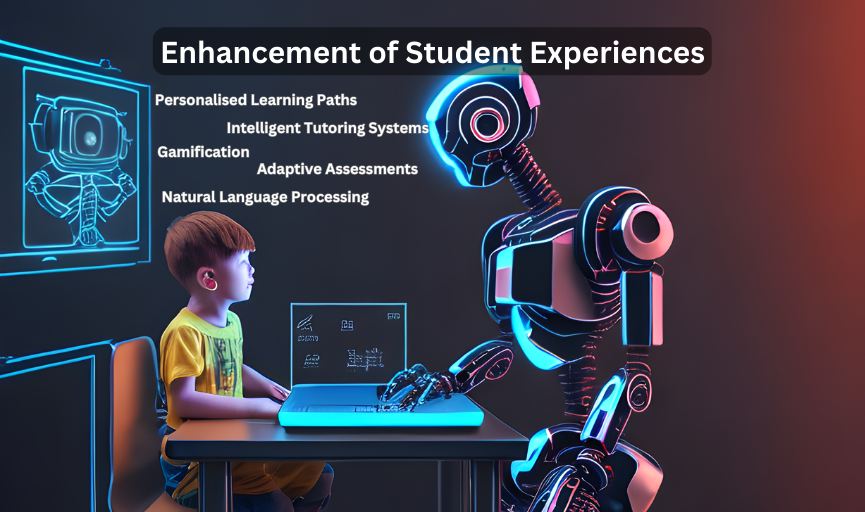For students learning programming, it is very important to receive quick feedback whenever they push a button: quick feedback helps to identify and correct errors in code as early as possible, minimising the proliferation of misunderstandings and bad coding practices throughout the program.
Nonetheless, building trustworthy AI tutors and tackling bias requires not only designing good algorithms and curating appropriate training data, but taking into account the social setting within which people interact with digital tools.
Personalized Guidance for Student Success
By being available whenever students need them, at a pace that suits them and their own learning style, identifying gaps in learning and providing tailored real-time feedback, and being free from the biases and preconceptions human tutors often carry with them, AI tutoring systems can provide a more inclusive educational experience to all students, no matter their age, demographics or learning style.
Natural Language Processing enables AI tutoring to engage with the student in a natural conversational dialogue, while providing immediate feedback on the student’s learning progress, and identifying rapidly when students don’t have it, provide students with additional explanations and help. Alternative methods can include posing additional examples, practice problems, or delving into alternative explanations.
Although this individualised coaching support is appropriate for most students, in some of our pupils, it encouraged reliance on AI and created a desire for a constant feedback loop (what we and others have called ‘parasocial interaction’). More careful pedagogical planning could ameliorate some of these issues, by ensuring that the AI confers appropriate productive feedback for the user in each contact.
Adaptive Learning
Adaptive learning can be a great way for students to follow their individual interests but remain anchored to a course’s essential goals, and it’s equally a great opportunity for an instructor to re-envision – and hopefully enliven – the order in which he or she presents a course’s curriculum.
An adaptive engineering course can provide students on these tracks with tailored, self-directed learning experiences that provide ‘bandwidth to learning’: they can study their most challenging problems, they can do more practice than previously possible, with richly-sensitised instant feedback, and they will get the personal attention they need from a personal tutor.
Students feeling more confident with their approaches to ‘programming’ would likely be spending less time on the AI-Tutor, and potentially overrelying on it for feedback, diminishing its potential by repeating decisions it suggests as correct. Improvements to the specificity, interactivity, token limit and prompt engineering of the AI-Tutor’s feedback could have measurable behavioural impacts on students, at least so far as precision and accuracy of the feedback are concerned. The verdict on better student performance and less frustration is a matter left for further research. What hasn’t changed is our belief in the power of educational technology as the next frontier in educational research.
Self-Regulated Learning
Self-regulated learning is a well-respected pedagogical approach and gives learners greater ownership and responsibility for their learning. They become active learners, for example learning to assess their own progress. They can start to look back on prior experiences to build expertise on how to work towards the achievement of learning goals including depicting the challenges they might encounter (time, resources) and how they can be managed.
We know from research with Hybrid Harry and Iterative Ivy, our two personas who faced Hybrid APAS, that one sought feedback from the AI-Tutor after each step and accordingly iterated their work on the problem before submitting a solution to the APAS, whereas the other waited until they had full code before seeking feedback.
While these findings are hopefully positive, we need to remember that students in low-income or rural areas may not have access to technology that would let them use an AI tutor, so we will need to continue to develop efforts to increase access to the tools. Additionally, the way that an AI-Tutor is pedagogically integrated into a broader classroom ecosystem may need to be researched further in order to continue to support student success in different classroom environments.
Real-Time Feedback
An interactive tutoring tool that responds to a student’s learning style and pace could provide individualised touch points for the entire course. Students who are struggling and need additional explanation or practice have it available, while students who are getting accustomed to the material could be presented with the challenge of a tougher topic to keep them engaged.
Real-time feedback can also support students’ learning by enabling them to ask questions of the AI tutor and receive feedback on their answers in real time. As students respond in real time, the session’s system can tailor-shape its feedback according to the student’s answer and the underlying reason behind it.
What this study made clear was that while AI-Tutor was empowering for students, there’s still room for more growth. Some students were worried that learning with AI-Tutor might make them become too dependent on computers, and in the long-term could hinder them in their studies. Other students said that they wanted to see easier ways of interpreting the feedback, as well as more tangible examples to help them understand what was happening. They also wanted to be able to interact with the computer a little more.


